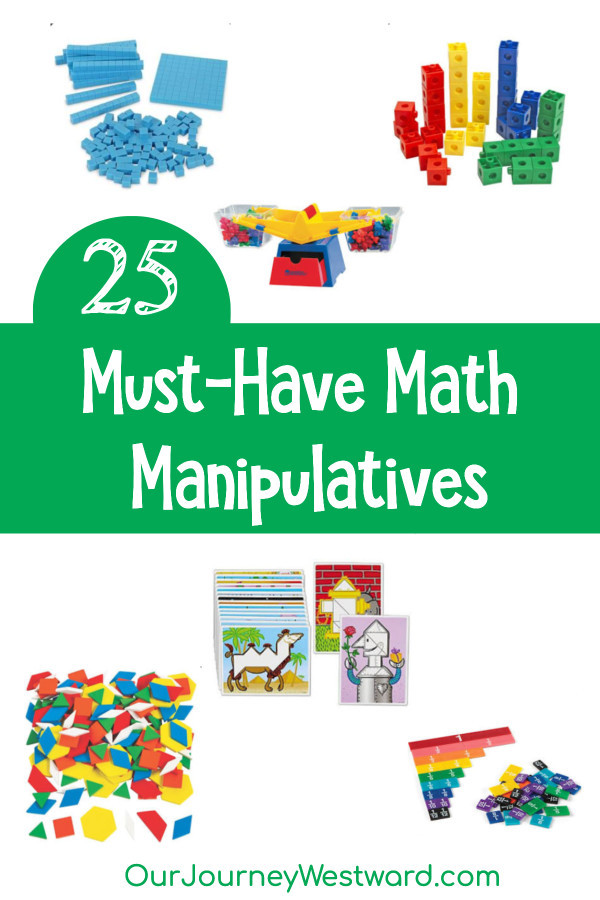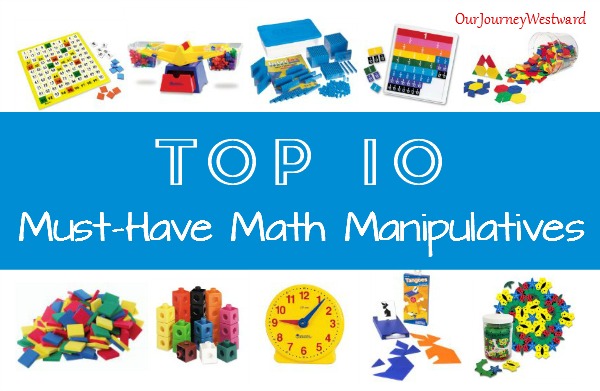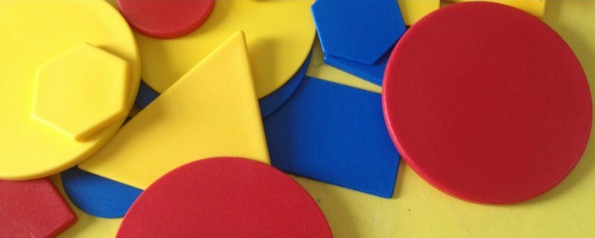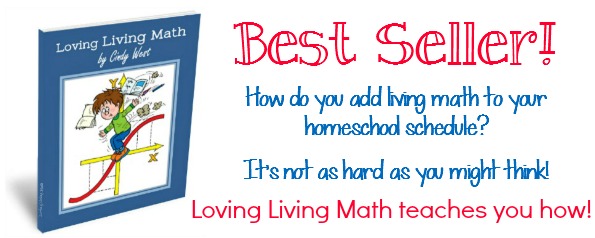Which math manipulatives do I need for homeschooling?
I love living math—so much that I even wrote a book about it: Loving Living Math. It’s special for many reasons, but I’ll focus on one today. Living math offers opportunities for real-life, meaningful, hands-on learning.
One of my favorite methods is using math manipulatives to help children understand concepts and think mathematically. In this post, I’ll discuss the benefits of various types of math manipulatives.

This post contains affiliate links.
What are math manipulatives?
Math manipulatives are tools we give children that they can touch and move (aka manipulate) to understand various math concepts. These tools can be store-bought, homemade, or even simple objects you have around the house.

Why are math manipulatives helpful?
The purpose of manipulatives is two-fold. First, they help children to form a concrete understanding of abstract concepts. When a child can “see” that 1/2 + 1/2 = 1 whole using fraction manipulatives, the often challenging concept of fractions gets much easier. There is now a picture in the brain of what a fraction really is. In other words, the manipulatives have helped build brain connections and file away essential memories.
Second, manipulatives can help to meet learning styles. If your child is kinesthetic (learns through movement) or visual (learns through seeing), manipulatives provide the perfect learning environment. I’ve found that even children who typically thrive linguistically (through language) need math manipulatives to help them “get” certain math concepts because their learning style is words, not numbers.

What are my favorite math manipulatives?
Over the years, I’ve been asked several times which manipulatives are worth having on hand. They aren’t always inexpensive, so spending money on those that give the most bang for our buck is important.
Over the years (in homeschooling and teaching in public schools), I’ve consistently found these ten manipulatives to be the most used and crucial for understanding challenging math concepts. Having these (or making your own) will be beneficial tools in your homeschool for many years.
10 Must-Have Manipulatives
When I taught in public school, plenty of manipulatives were on hand. Some of them were used repeatedly, while others sat on the shelves. Not all math tools used in public school translate well to homeschooling, but the ones I’ve included below do. So, this list has passed two important tests of experience with children. This is a cream-of-the-crop lineup for you.
You’ll love these manipulatives!
1. 100 Board – This can help teach skip counting, all operations, prime numbers, square numbers, and much more!
2. Balance – There are many types of primary balances that will compare weights of all kinds.
3. Base Ten Blocks – The concepts of place value and regrouping can be very abstract and hard to grasp. This set of blocks provides a concrete and visual understanding that makes math make more sense.
4. Fraction Circles or Fraction Tiles – Fractions can be tough to grasp for many children, too. A set of fraction tiles or circles helps children see and build relationships between fractions – and that makes a world of difference in understanding.
5. Pattern Blocks (with activity cards) – Pattern blocks not only teach patterning – simple and complex – but geometry, critical thinking, and reasoning, as well.
6. Square Color Tiles – We use these tiles all the time in the early years. They come in handy for patterning, measuring, graphing, and more.
7. Snap Cubes – This is another manipulative we use all the time in the early years. The cubes are pretty much used for similar purposes as the square color tiles with even more uses like determining volume and building geometric figures.
8. Student Clock – A simple, hands-on clock is imperative for helping children understand minutes within hours.
9. Tangrams (with activity cards) – One tangram set only has seven little pieces, but they pack a big punch when it comes to spatial reasoning.
10. Tessellation Puzzles – Tessellations are repeating patterns gone wild. They repeat up, down, and all around without any gaps or overlaps. Puzzles like the one I’ve linked challenge brains!
Nice-to-Have Math Manipulatives
I just couldn’t pass up sharing these honorable mention math manipulatives. If you really like the way manipulatives enhance your homeschool and have extra money to spare, each of the following can also be very beneficial tools for mathematics education.
Again, in some cases, you can create your own homemade versions. You might also be surprised to find a few things you already have around the house as math manipulatives!
How to use math manipulatives
If you aren’t sure how to use math manipulatives, don’t worry! Thankfully, they aren’t too hard to use. Listed below are some blog posts that explain how to use the various tools. You will quickly gain confidence when teaching with them. Also, don’t be afraid to use them to make up your own math activities!
Luckily, there are many books, how-to videos, and how-to blog posts to give you learning ideas for any type of manipulative. Often, a quick Google search will help you find the ideas you need!

Learn how to use specific math tools
Measurement with Manipulatives
Using Linking Cubes to Teach Volume
Using Beads to Teach Classification
Various Candy as Manipulatives
Are you excited about math manipulatives?
I hope so because they are SO good for your homeschool! Learn more about living math and how to incorporate it successfully in your homeschool with my easy-to-read and easy-to-implement how-to book for parents – Loving Living Math.
More Living Math Resources
Check out these two masterclasses if you’d like to learn more about living math and manipulatives. You will expand your knowledge and be able to confidently apply the concepts in your homeschool. There are so many benefits to living math!
-
 Product on saleEarly Math Foundations MasterclassOriginal price was: $20.00.$10.00Current price is: $10.00.
Product on saleEarly Math Foundations MasterclassOriginal price was: $20.00.$10.00Current price is: $10.00. -
 Product on saleLiving Math Homeschool MasterclassOriginal price was: $20.00.$10.00Current price is: $10.00.
Product on saleLiving Math Homeschool MasterclassOriginal price was: $20.00.$10.00Current price is: $10.00.
More Math Ideas for You





























